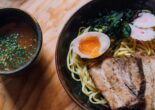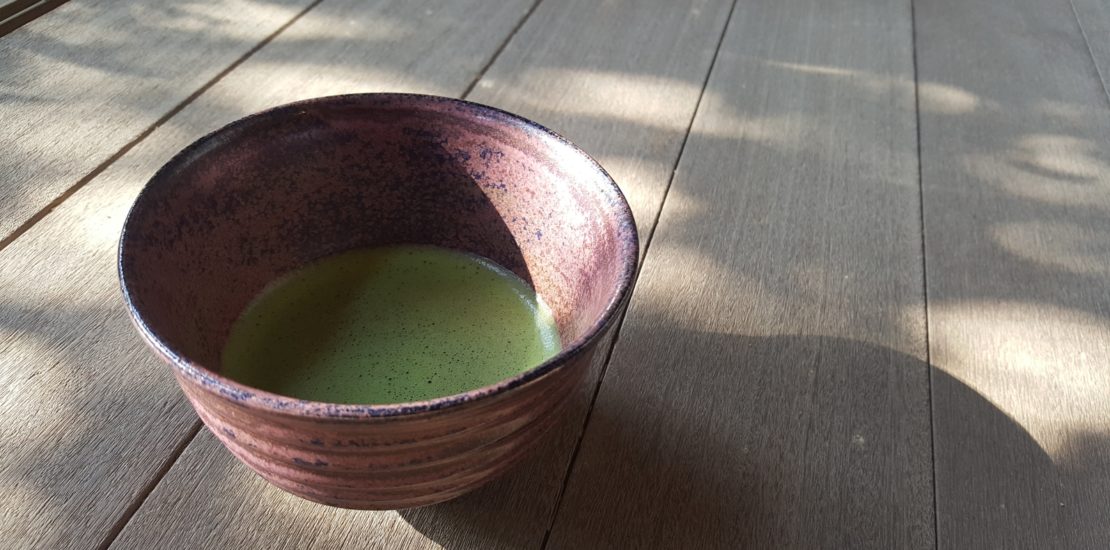
About Japanese Tea Ceremony: The Ritual and Ceremony of Tea
The Japanese tea ceremony is, in some regards, a religious practice socially linked to Zen and Shinto. In this article, I explore why the translation of Chado and Chanoyu as « Japanese tea ceremony » or « Tea ritual ».
Why was drinking matcha coined as a ceremony or a ritual?
It is easy to forget that the term is translated to « Chanoyu » or « Chado », meaning « hot water for tea » and « way of tea ». While the former truly reminds us that tea is « just tea », the latter has a Daoist or Zen reference. But in no way, any of those terms refer literally to Tea as a ritual or as a ceremony.
Today, I would like to discuss, through my personal experience and readings, this peculiar choice of words. I hope that I can take you through a bit into the Japanese ancient and modern religious landscape and my own practice of small daily tea. But let us start with a first reference…
The most famous Japanese book written in English about it, the often-quoted Book of Tea by Okakura Kakuzo, refers to the Japanese tea ceremony (or ‘Tea’) as a « tea ceremony ». And it is interesting to note that Okakura Kakuzo starts by mentioning the ‘Zen tea rituals’ at the root of the modern tea ceremony. However, he fails to explain why he switches from ritual to ceremony. Perhaps an earlier translation of the terms by Americans and English travelers induced him into using the word ritual. In any case, we got our first clue as to why Chado / Chanoyu has been indistinctly translated as a tea ceremony/ritual. But while it would be an explanation of why ceremony and ritual translates to Chanoyu or Chado indistinctly, it does not justify the use of these terms.
I have often mentioned here that the terms ceremony and ritual are a bit intimidating and should not be taken too seriously for people wanting to have a first experience with Tea. The overall aim, if you are invited to a tea ceremony, is to relax and enjoy a pleasant and meditative moment of beauty.
In this article, I will now try to explain in which way, based on my own experience in Japan, tea has been a ceremony and also a ritual for me and in Japanese society.
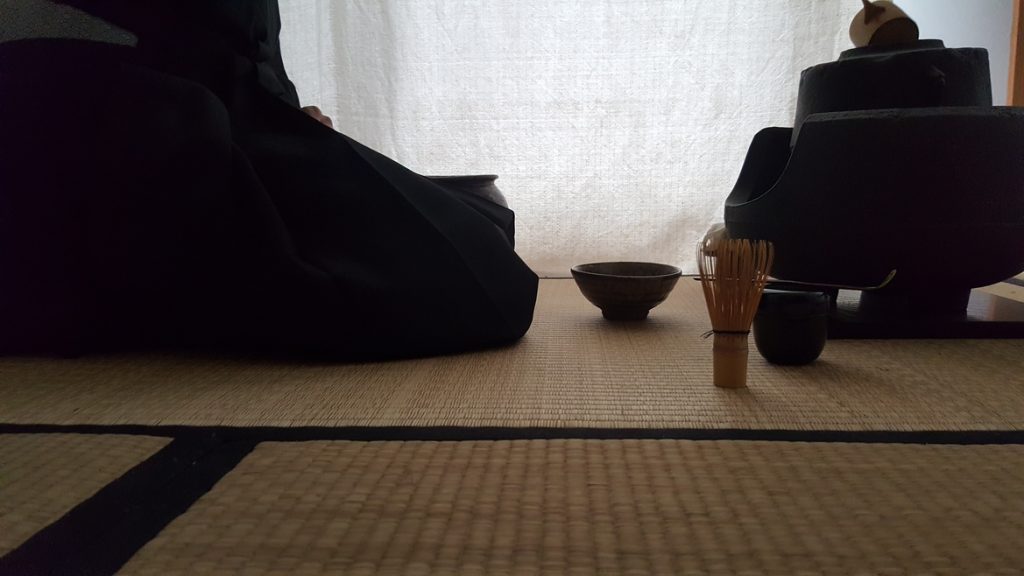
Zen tea ceremony for the Buddha
Let me start with the Japanese society and the term « ceremony ». During the first year of my practice, when I was still studying in France, I thought that the Japanese tea ceremony (which I sometimes simply refer to as « Tea ») was mostly a very ‘serious’ and ‘sacred’ way of making tea for someone. That was until I came to a memorial tea ceremony. Instead of offering a bowl to someone, we offered a bowl to the tokonoma, the altar that was dedicated, on that day, to a person who had passed years ago. Obviously, I was not in a social meeting anymore.
When I moved to Japan, I quickly realized that Tea was not only practiced in public but that it was also practiced during religious activities.
Now, a bit of history here. According to the Zen culture, the tea plant traveled from India to China with Bodhidharma – the father of Zen and that it was also a Zen monk who brought tea to Japan. The story goes (in one of many versions) that Bodhidharma had decided to meditate for his whole life without sleep. After seven years at it, he dared close his eyes a bit. Furious at himself, he tore his eyelids and threw them on the ground (meditation is a serious business when you are looking for a way to stop the whole planet from staying in bad karmic reincarnation circles). And from Bodhidharma eyelids…grew the first plant of tea. Bodhidharma saw the plant, brewed it, and could stay awake for as long as he needed.
When I moved to Japan, I quickly realized that Tea was not only practiced in public but that it was also practiced during religious activities
Tea, and especially matcha, is the Zen brew, indeed. Just like it helped Bodhidharma, it can help anyone to stay awake during long and cold hours of meditation while keeping the mind calm and composed.
When tea started to be consumed by aristocrats in China and Japan, it was already being drunk (and binged in) in Zen temples…to the point that offering tea to the Buddha and revering the drink as Bodhidharma’s very own gift to the world, was not far fetched at all.
The practice later also came in some Shinto practices (Shinto being the vernacular religion of Japan). Eventually, the tea schools developed a specific ceremony to make tea for deities in general.
I do not know of all the details of this tradition but I know for sure: each year, each great master of the Schools of Tea offers at least one bowl of tea to the Buddha in a very public and extremely ceremonial way. Tickets are expensive, guests are selected (often by dozens). If you have the chance to ever witness this you are very lucky.
Offering tea to the Buddha is usually the highest teaching that one can receive in a tea school. Learning is a privilege that only the most experienced and intimate members of the school can enjoy and it is one of the closest steps to reach masterhood.
A lower version of this offering is actually the memorial offering for a funeral or a death anniversary. This practice too could easily be called a ceremony.
On a much brighter note, during traditional Japanese weddings too, tea is served, often by the wife to the husband. And I have also heard of some tea bowls with a double spout so that the newly wedded couple, offering tea to one another, drink from the same tea bowl while facing each other. How romantic…
The ritual of tea: what is a ritual?
All this might start to explain the ceremonial part of the Japanese tea ceremony. But in what I described, it is not as much that it is ceremonial, as it is a ceremony. Actually, there are very ceremonial ways to practice Tea and others that are much less formal.
The offering of tea to deities is very ceremonial. No one is going to drink that tea and the moment is not exactly enjoyable for anyone. Every moment is carefully thought of. It is, indeed, a spiritual moment more than a social moment.
Since there are many other practices of tea, « Tea ceremony », in that sense, is not exactly the right term to describe the vast array of practices that compose Tea.
Let’s move on to the second term suggested in English: tea ritual. It is much rarer to see that term but it is nonetheless quite interesting. A ritual is something that is repeated. It has, in many ways, a religious meaning, but that religious meaning is not directly related to any peculiar religion. It is rather related to the concept of sacredness.
When someone says that washing his face every morning is his or her ritual, it means that this process, repeated every day, in a certain repetitive way, is something important to him, it is, in a sense, sacred. Like when someone tells you that « coffee in the morning is sacred ». A ritual has something to do with a certain repetitive practice that is held dearly, somehow. This practice has become sacred: the practitioner does not like to remove it from his or her everyday life or does not like to change it.
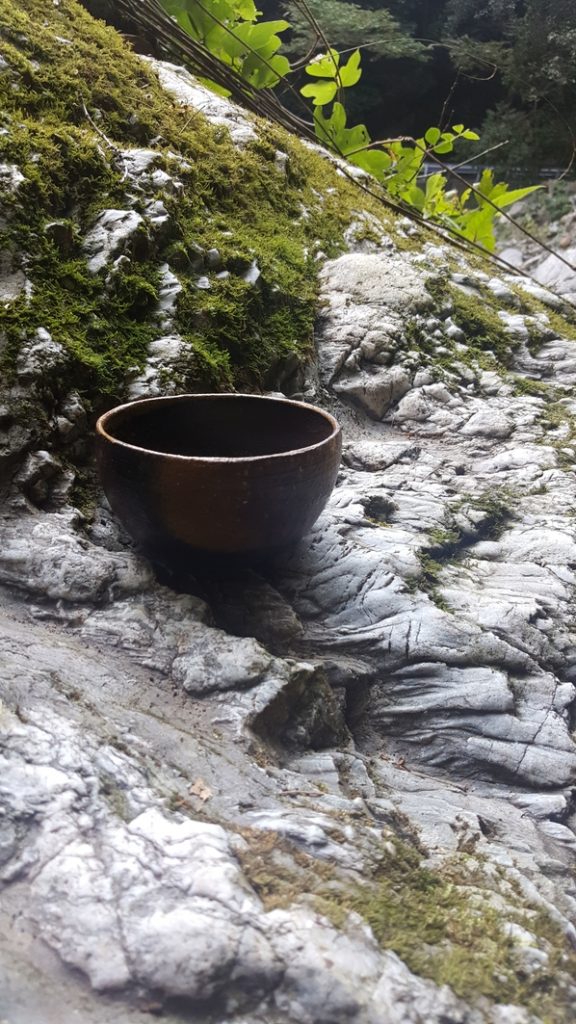
Tea as a modern ritual
I have recently discovered that some American companies offer to create secular rituals for people. For example a certain set of phrases to say every time they reach a target at work or a certain set of movements they do in the morning. The companies argue that these rituals give their clients a sense of meaning. And actually, the exact same could be said of Tea. Through a certain set of moves, through prepared interactions and actions, hosts and guests participate in a symphonic act to unfold a long moment of delight and meditation.
If I can speak for my own experience: by using pre-defined means of expressions and actions, Tea gives me a feeling of going back home, not in space, but in time. The time during which I make tea is a time where I feel comfortable. In Japan, I have wandered in many forests, shrines or even city, to stop somewhere and make Tea in a nice spot. I would organize the space to fit the needs of my movements and then make tea for myself or a friend.
I have often met some Japanese people and offered them a bowl of tea. Despite our language and cultural differences, we could somehow communicate. The reason is that I knew what to do during these moments. The rite of tea is made to welcome someone in, even if that person does not know much about tea. In that sense, it is a powerful ritual that belongs to no religion or belief.
The time during which I make tea is a time where I feel comfortable. In Japan, I have wandered in many forests, shrines or even city, to stop somewhere and make Tea in a nice spot. I would organize the space to fit the needs of my movements and then make tea for myself or a friend.
And don’t forget to enjoy
In conclusion, I hope my readers understand now why tea is sometimes called a ceremony or a ritual. It is very likely that the first foreign observers of the Japanese tea ceremony found it very « ceremonial » and were the witness of important religious ceremonies. In parallel, the term ritual, preferred by many academics, makes sense in the context of repetition of a moment considered sacred to some extent.
If you ever go to a tea ceremony, remember that, though it might look very ceremonial, it is your host’s duty to welcome you and relax you. It is also your duty to not bother your host though. Keep in mind that you should respect your surroundings. The ritual is not closed on itself: it welcomes you. So unless you are invited to a very high ranking religious ceremony, don’t even think of it as a « ceremony » at all. Just enjoy.
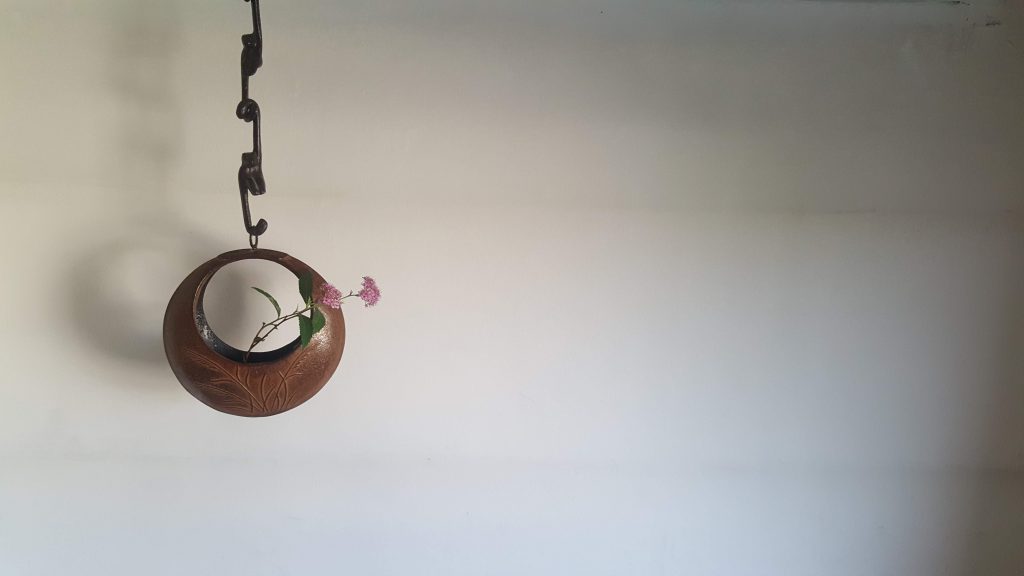
Thank you for reading this week’s blog!
If you want to be our blogger and share your Japan life, send us an email to [email protected]
If you are having trouble finding a place in Tokyo, please feel free to contact us and have a look at our properties at tokyoroomfinder.com. We will connect you with your desired house at no cost!
Related Articles
Japanese Restaurant Etiquette: Simple Mistakes That Can Ruin Your Meal
Warning: Undefined array key "sfsi_threadsIcon_order" in /home/veremosglobal/tokyoroomfinder.com/public_html/blog/wp-content/plugins/ultimate-social-media-icons/libs/controllers/sfsi_frontpopUp.php on line 165
Warning: Undefined array key "sfsi_blueskyIcon_order" in /home/veremosglobal/tokyoroomfinder.com/public_html/blog/wp-content/plugins/ultimate-social-media-icons/libs/controllers/sfsi_frontpopUp.php on line 170
Warning: Undefined array key "sfsi_bluesky_display" in /home/veremosglobal/tokyoroomfinder.com/public_html/blog/wp-content/plugins/ultimate-social-media-icons/libs/controllers/sfsi_frontpopUp.php on line 266


